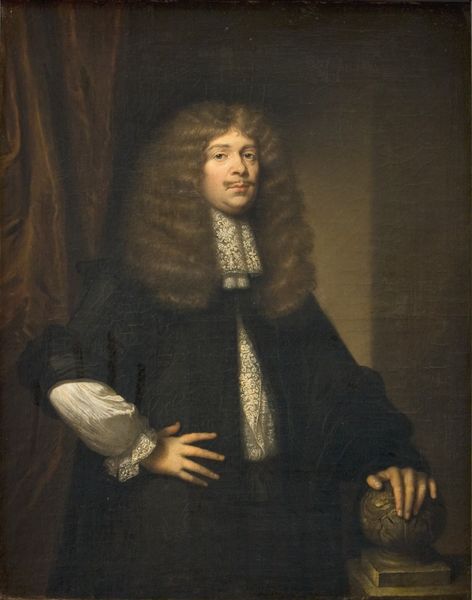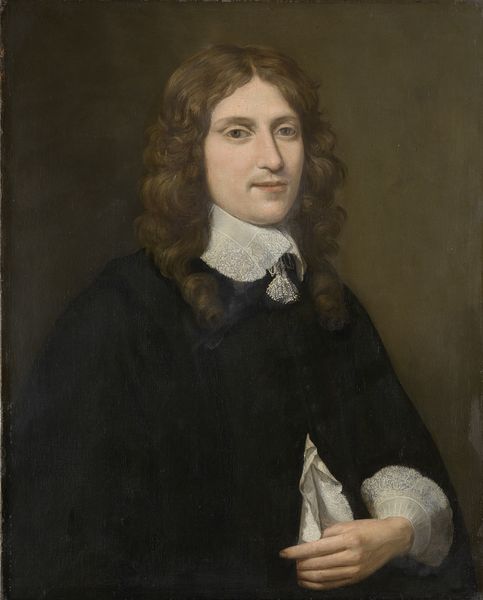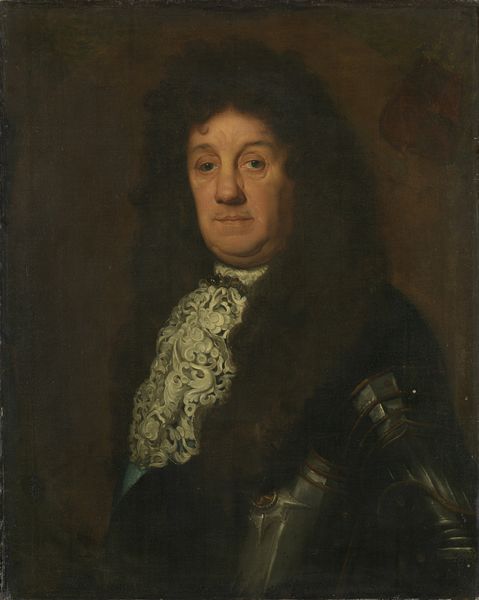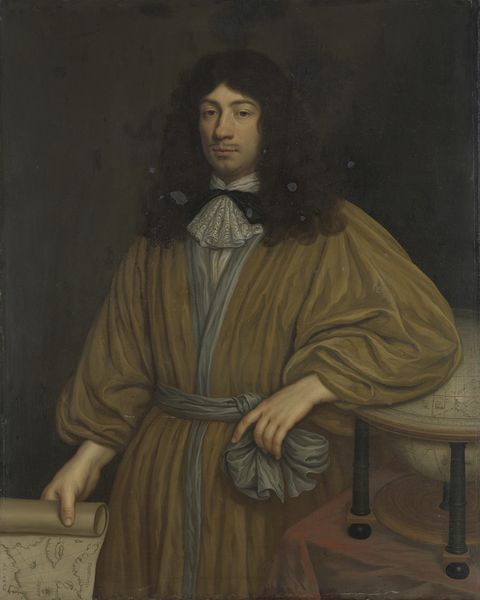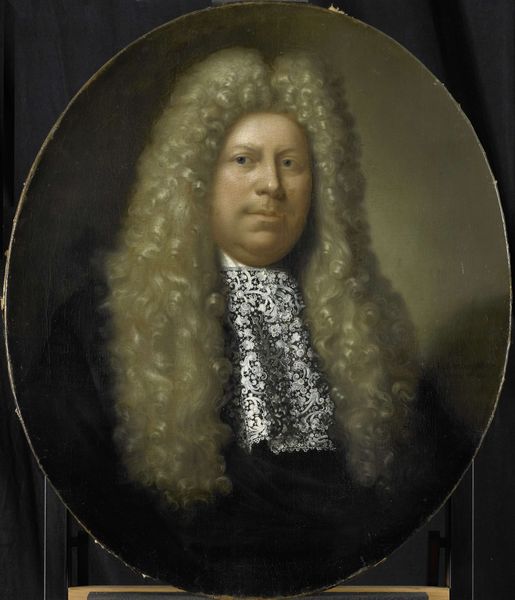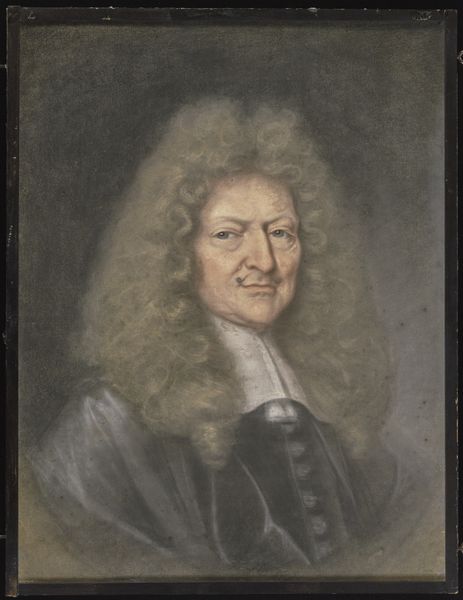
oil-paint
#
baroque
#
oil-paint
#
history-painting
Dimensions: height 97.5 cm, width 78.5 cm, depth 7.5 cm
Copyright: Rijks Museum: Open Domain
Curator: The darkness almost swallows him! It's a potent, yet unsettling image. Editor: Indeed. What we're looking at is Gerrit van Goor's “Portrait of Johannes Camphuys, Governor-General of the Dutch East Indies,” painted in 1685, utilizing oil on canvas. It’s very much in keeping with Baroque portraiture. Curator: That stark contrast speaks volumes about power, doesn't it? The lace, the dark suit—the material signifiers of wealth against the deep void, likely very costly to achieve such detail with such oil paints and with the labor time demanded by the Baroque style. Editor: Absolutely. We can't ignore the legacy of colonialism and the East India Company. Camphuys was instrumental in consolidating Dutch power in the region, which raises critical questions about the sources of the materials used to create this portrait – and of course, of Camphuys' lace. Who produced this fine material? How were they compensated for their labor? Curator: Consider the time, too – 1685. This was a period defined by expanding trade routes. This artwork acts as a repository of knowledge about what sorts of things were being produced and consumed and at what scales. This would have been cutting-edge production at the time. Editor: And consumed at what cost, human and environmental? The portrait, while seemingly an objective representation of a powerful man, can be interpreted as a cultural artifact complicit in colonial narratives. Curator: True, it becomes less about idealization and more about the documentation of socio-economic status, a reflection of an emerging global market. We see evidence of this even at a high level, considering who commissioned the artwork, where, and for what purpose. Editor: By interrogating the historical context and the conditions of production, we can unearth the less palatable narratives embedded within seemingly straightforward portraiture. It challenges the celebration of individual achievement and compels us to examine the broader structures of power at play. Curator: Absolutely, understanding art making as labor brings into sharper relief many features in its context, allowing the careful observer to extrapolate a more full picture of society. Editor: A reminder that beauty can often mask uncomfortable truths. Thank you.
Comments
No comments
Be the first to comment and join the conversation on the ultimate creative platform.




